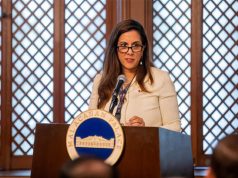A report that tracks Southeast Asia’s digital economy is bullish on the growth of Philippine digital economy.
This year’s e-Conomy SEA report titled “Through the waves, towards a sea of opportunity” launched last November 23 projects that the Philippine digital economy could reach $20 billion Gross Merchandise Value by the end of the year, after growing at 22% over the past year.
It also listed the top three digital activities of Filipinos that showed higher adoption rate.
Among these are e-commerce, food delivery, video-on-demand that recorded an adoption rate of 88%, 69%, and 58% respectively among digital urban users.
Based on the report’s projection, the Philippine digital economy may also hit $35 billion GMV by 2035, growing a 20% Compound Annual Growth Rate (CAGR), and possibly will hit $100 to $150 billion GMV by 2030.
In view of this, the report projected that e-commerce may also reach $14 billion GMV this year and $22 billion in 2025 as it continues to boost the Philippine digital economy.
This growth is noted despite the partial resumption of in-store shopping, e-commerce accounted for 70% of the overall Philippine digital economy.
Aside from e-commerce, the report said the following industries are also propelling the Philippine digital economy:
- Transport and food delivery are projected to reach $1.9 billion GMV in 2022 and continue to grow at 29% CAGR to hit $4 billion GMV in 2025.
The report cited that the demand growth is normalizing as many people are eating out and some are returning to office while others are delving into traveling with the reopening of the country’s tourism.
- Travel is back, with 180% year-on-year growth to hit $1 billion GMV in 2022. As recovery to pre-pandemic levels is likely to be gradual, travel is growing at 44% CAGR by 2025 where the sector is expected to reach $4 billion GMV.
- Online media which comprises music, video streaming and online gaming is projected to grow at $3.1 billion GMV in 2022, with year-on-year growth at 17% since the pandemic peak last year.
The report said paying users in the Philippines are the highest in Southeast Asia at 37%. They are playing online games at least once a week.
- Digital financial services show sustained growth, with lending and remittance hitting $6 billion this year. Remittance is expected to deliver $4 billion in Gross Transaction Value (GTV) at 32% year-on-year growth. In 2022, digital payments will drive $75 billion GTV and keep growing at 18% CAGR to reach $123 billion GTV in 2025.
Following these developments, the Philippines is seen to be the fastest growing digital investments sector in Southeast Asia this year with a 63% growth rate from 2021 to 2022..
It is also the second fastest digital economy in the region next to Vietnam this year at 22% year-on-year and between 2022 to 2025 at 20% CAGR.
The report said because of this the country will attract more investors in the long term including digital financial services.
“Digital financial services are soaring high and the sector continues to attract investor interest, capturing 56% of total investor funding in 2022 and raising roughly $450M in the first half of 2022 alone. Both Filipino unicorns Mynt and Voyager are in the fintech space,” insights from the report read.
“Web 3.0 has attracted sizable investor funding raising $90M in the first half of 2022 with investors bullish on cryptocurrency adoption in the Philippines which is considered one of the fastest growing in the world,” it also cited.
Willy Chang, Associate Partner at Bain&Company said the Philippine digital economy “is one of the more attractive investment hubs in the region.”
“Across internet sectors there remains tremendous whitespace for growth as the ecosystem drives greater digital inclusion in the country, particularly outside of metro areas. We expect growth to come from not only the physical goods and services internet sectors, but also digital financial services across payments, lending, and other Fintech products,” he said.
Meanwhile, Bernadette Nacario, country director of Google Philippines described the Philippine digital economy as “resilient” as it continues to “provide boundless opportunities.”
“This year’s e-Conomy SEA report also suggests that the country will be a leading investment destination with over 70% of investors expecting deal activity to increase in the period of 2025 to 2030. Google is committed to help the Philippines sustain the growth momentum of its digital economy through local partnerships, programs and products that aim to improve the lives of Filipinos,” she said.
Given these, Trade Secretary Alfredo Pascual said the digital future of the Philippines is bright.
“The seventh edition of the e-Conomy SEA report shows that the digital future of the Philippines is bright as it has the fastest growing digital investments sector this year in the region. The Department of Trade and Industry is committed to digitalize our MSMEs and work closely with our private sector partners like Google to help reach the full potential of the country’s growing digital economy,” the DTI chief said.
The e-Conomy SEA report combines Google Trends, Temasek insights, and Bain & Company’s analysis in addition to industry sources and expert interviews, spotlights the digital economies of six countries in Southeast Asia: Indonesia, Malaysia, the Philippines, Singapore, Thailand, and Vietnam. —Rosette Adel










